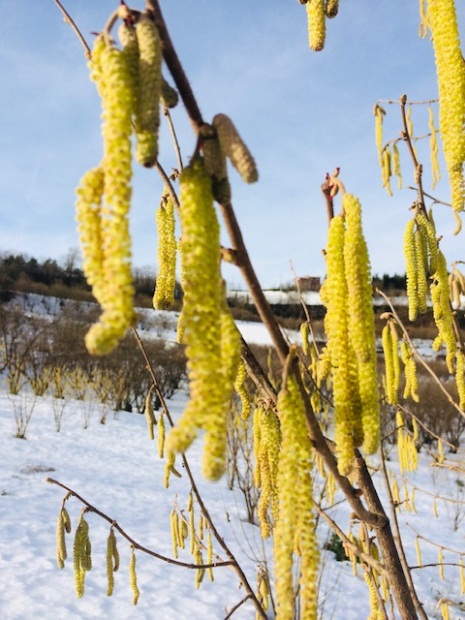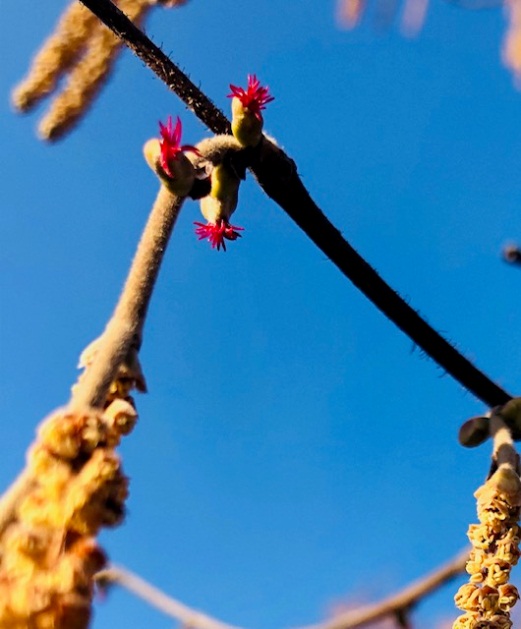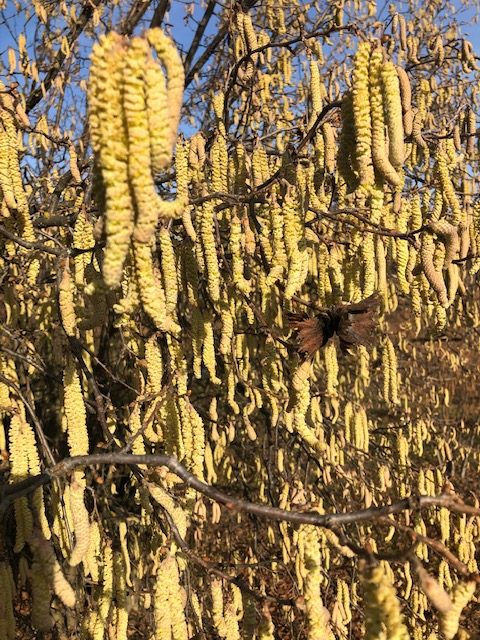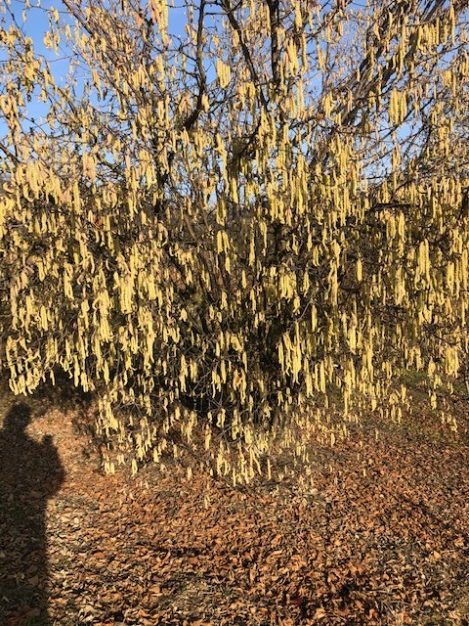The Travesa Nursery propagates the following hazelnut varieties
My nursery specialises in the cultivation of the Tonda Gentile variety (syn. Tonda Gentile delle Langhe and/or Tonda Gentile Trilobata) with material from mass selection carried out over the years in the area of origin of the Alta Langa and its related pollinators. In recent years I have started to multiply material supplied by DISAFA University of Turin, in collaboration with CreSo: the result of more than 20 years of clonal selection work. These clones are called UNITO clone MT5, UNITO clone AD17, UNITO clone PD6: they clearly improve the variety in terms of quality, production and yield at shelling.

What are the characteristics of the different varieties of multiplied hazelnut plants?
- Tonda Gentile hazelnut (syn. Tonda Gentile Trilobata or Tonda Gentile delle Langhe):
This variety is absolutely recognised as the best in the world for its organoleptic characteristics, for its excellent yield at shelling, for the easy detachment of the perisperm at roasting and for its low fat content that prevents rancidity. The excellence of this cultivar is a special, unique aroma that imparts a delicious flavour to its preparations. The variety originated naturally, discovered by chance and propagated over the years with careful clonal selections. In recent years, there has been a strong reappraisal of the product, due to the emergence of many local processors who, by processing the product in purity, are establishing all its derivatives worldwide. Until a few years ago, the variety was mainly popular in the Langa area of origin. The strong worldwide interest in hazelnuts in general, with a considerable increase in consumption, has led to the cultivar being developed in most of Piedmont, and in recent years successful cultivations have been carried out in Lombardy, Veneto, Emilia Romagna and Tuscany. Positive results abroad are taking place in Eastern Europe, especially in Romania. The variety is self-sterile, so it needs adequate pollinators. It is a plant of medium vigour with early ripening (in Piedmont it ripens from 20 to 30 August) Experience in central Italy gives an advance of 10 days depending on the year. It is a rustic plant that needs drained soils with a lot of skeleton, if irrigated it increases production. Soils with water stagnation should be avoided. The first production occurs in the 4th to 5th year to reach a maximum at 8-9 years of age. - Hazelnut Tonda Gentile Romana:
Variety widespread in the Viterbo area, good productive quality, matures about 20 days after the Tonda Gentile and adapts well to the same soils. It is an excellent pollinator of the Tonda Gentile. Spherical fruit, good yield at shelling. - Tonda di Giffoni hazelnut:
An excellent variety selected in Campania of great vegetative vigour with the characteristic of earliness of entry into production. In the typical area of Tonda Gentile, it ripens about 30 days later. Perfectly rounded fruit with excellent peelability and good organoleptic characteristics. Self-sterile variety lately pollinated by Tonda Gentile, Tonda Gentile romana, Nocchione and nocciolino. It is not pollinated by Tonda Gentile. - Nocchione hazelnut:
- Widespread in the Viterbo area. Good vigour, good production, shelling yield 40-42%. Larger round fruit than the Tonda Romana. Excellent pollinator of Tonda Gentile with early flowering compared to the Tonda Romana.
- Nocciolo Pauetet:
Varietà di origine francese. Frutto leggermente subsferico e omogeneo, pianta vigorosa con buona produzione e resa alla sgusciatura. Maturazione intermedia, ottimo impollinatore della Tonda Gentile, con fioritura con leggero anticipo rispetto alla Tonda Romana. - Wild hazelnut:
Naturally occurring plant in the forests of corilicultural areas. It can multiply by seed, carrying with it the varieties of the mother plants, giving rise to a population with a variety of characteristics. It is considered to be one of the best pollinators because of its great genetic variability and consequently different male flowering periods. It is not interesting from a production point of view. - Tonda di Giffoni:
- Very rustic and vigorous variety, very productive, with early entry into production. Perfectly round fruit with seed with white and consistent flesh. Easy peeling of the perisperm upon roasting (excellent peelability). Good organoleptic characteristics. It is one of the most popular varieties for large industries. Ripening: central-southern Italy, beginning of September, northern Italy, mid-September. Self-sterile plant. Needs the same pollinators as Tonda Gentile Trilobata (Tonda Gentile Romana, Nocchione, Pauetet). Does not pollinate Tonda Gentile Trilobata.
- Tonda dei Biglini:
Mutazione di Tonda Gentile delle Langhe individuata in località Biglini – Alba di cui prende il nome. Un tempo certificata come Tonda Gentile, successivamente viste le sue caratteristiche diverse è stata iscritta a Catalogo Nazionale delle piante come varietà Tonda dei Biglini. - Caratteristiche organolettiche simile a Tonda Gentile:
- Lower yield at shelling (2/3 points lower than Tonda Gentile) due to a thicker shell;
- Presence of a percentage (5-10%) of double biriglio;
- Very high production, in leased land it can reach 40 qunintals/ha with reduced alternation;
- Lower vigour, shorter interior;
- A demonstrated resistance to late frost (e.g. year 2020) and great heat (e.g. 2022);
- Needs fertile soil suitable for dense planting and can be planted in areas with more temperate climates and low temperatures.
- It is not entitled to PGI Piedmont registration.
What are the flowering periods of the different hazelnut varieties for pollination purposes?
- Tonda Gentile: very early male flowering, late December/January, but of no interest for production purposes as the variety is self-sterile.
Male flowering, mid-January-mid-February. In certain years it may extend into March. Phenological phase fundamental for production. Characteristic of the variety is the cold requirement for flowering induction: about 700 hours below +7 degrees centigrade. For this reason it is not suitable for temperate climates where the climate remains mild in winter, while it tolerates very low temperatures very well.



- Pauetet: medium-early male flowering, January-February
- Nocchione: medium-late male flowering, mid-February-March
- Tonda Romana: late male flowering, late February-March



- Wild hazel: it can flower according to the characteristics of its natural clones, from mid-January until the end of March, allowing pollination to take place over a very long period of time, in which female flowering can occur.
How should the hazel pollinators be arranged?
In areas of origin where there is a massive presence of wild hazelnut, it is necessary to insert a small percentage of tonda romana to cover the last flowering period. In the absence of wild hazelnuts, it is necessary to insert at least 5% pollinators of different varieties, positioned in rows in a windward direction, considering that pollination takes place in February-March and therefore with a usually north-north-westerly north-westerly wind. Having the pollinators not inserted in a patchwork of rows but in their own right allows for differentiated harvesting so as not to pollute the main variety. Where possible, good practice is to border the edges with wild hazelnuts to form a sort of hedge that will pollinate the entire hazel grove.

